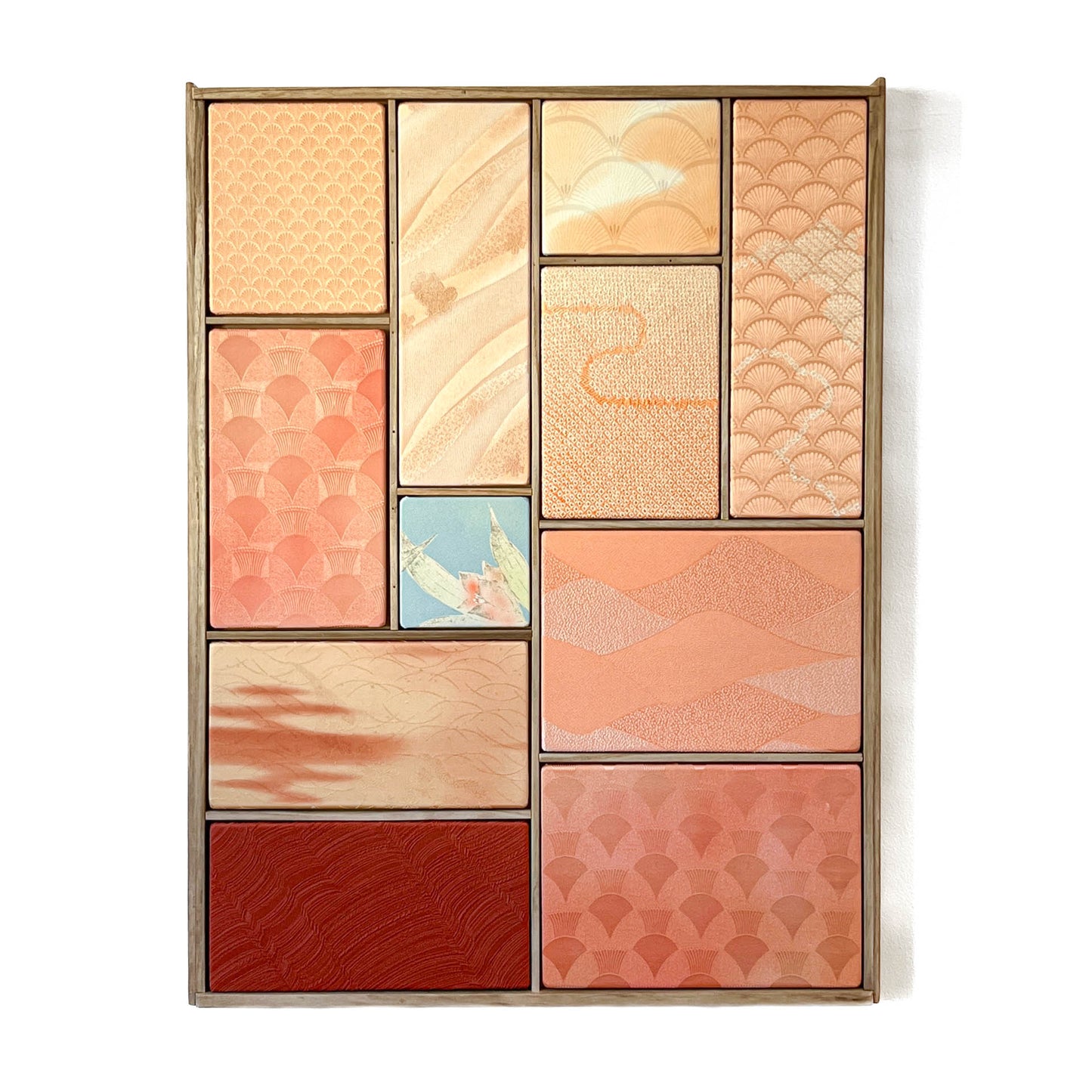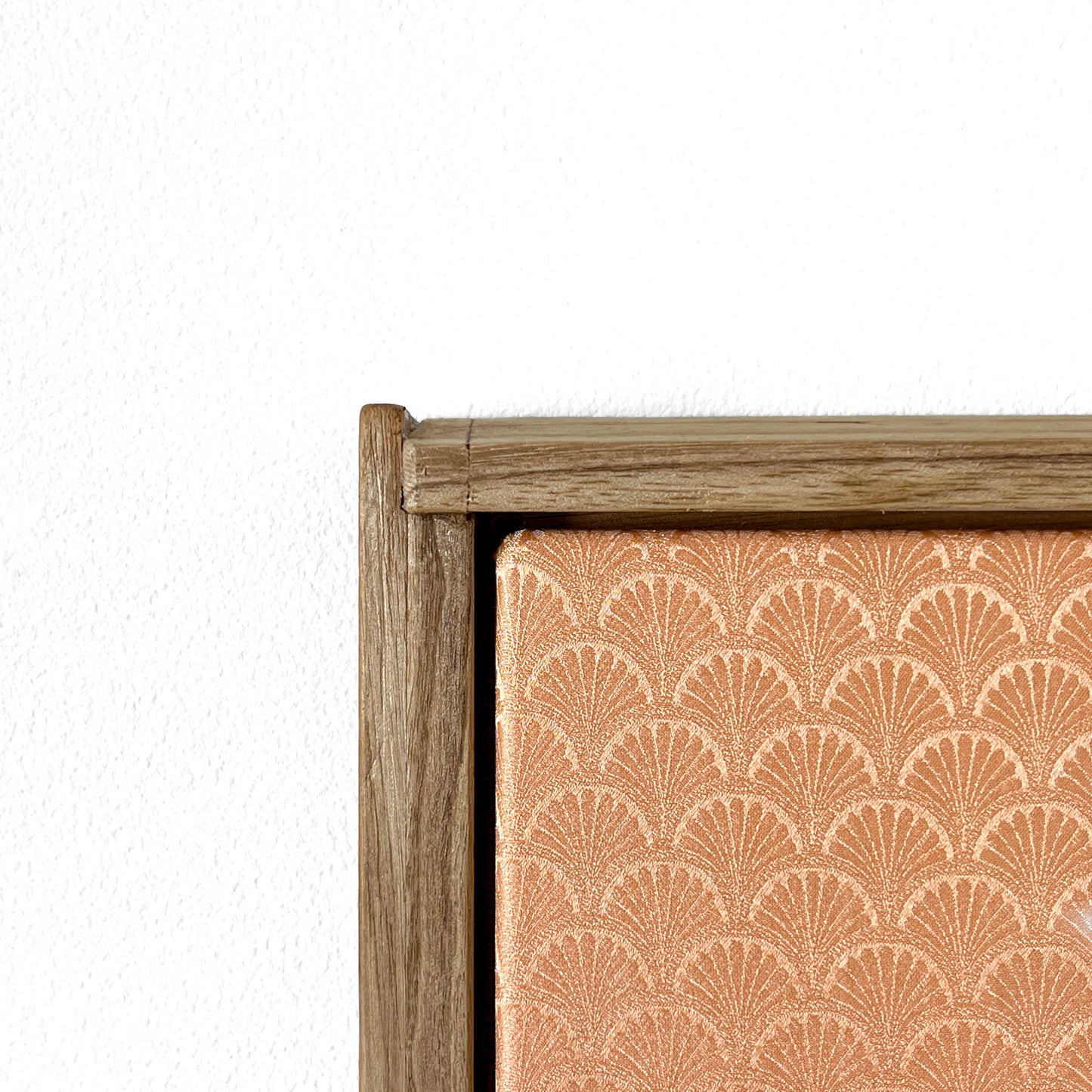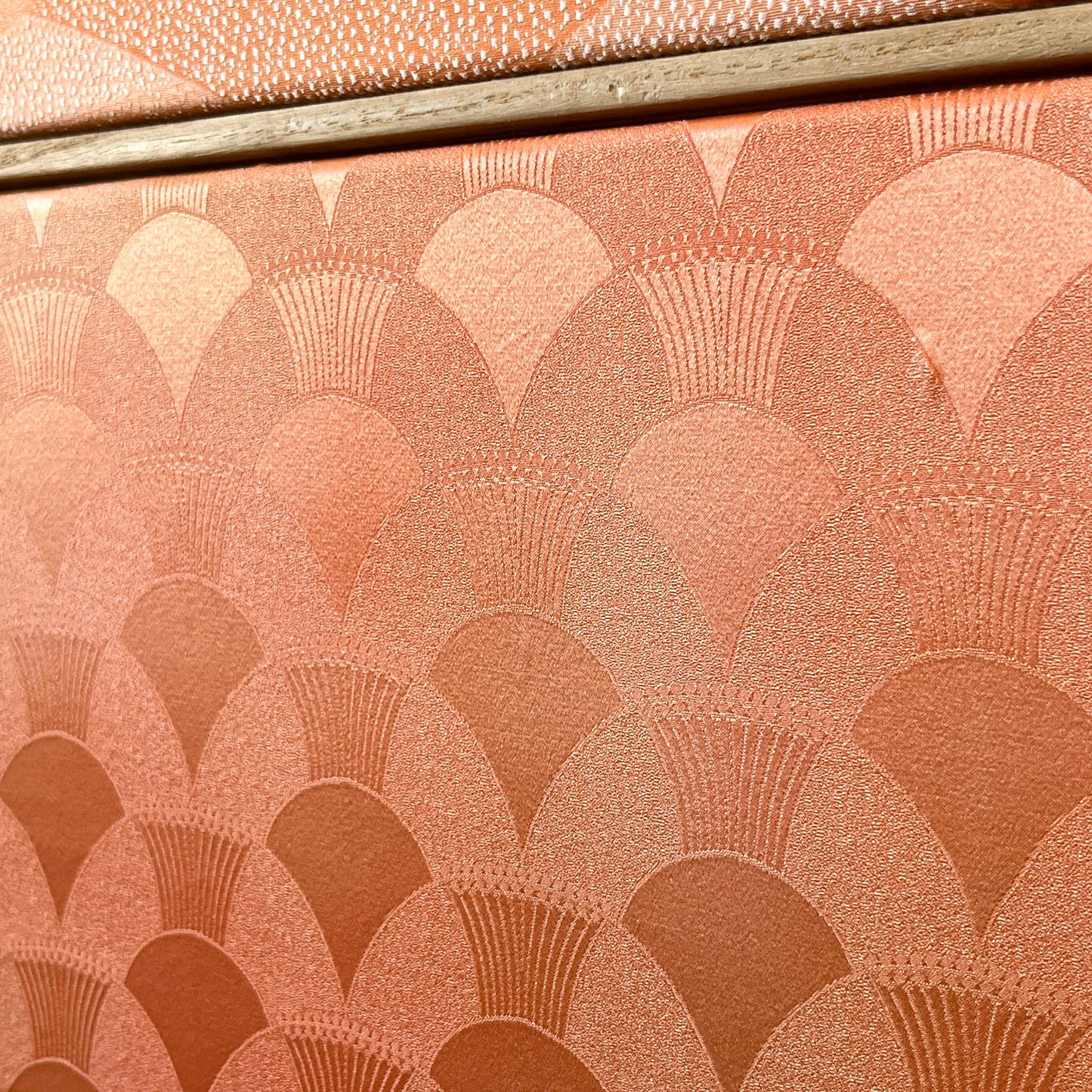Kobachi ~Coral Collection~
Kobachi ~Coral Collection~
Impossible de charger la disponibilité du service de retrait
Size
63 x 85 x 5cm
Materials
silk (outside-layer) , wooden frame (paulownia)
Story behind the work
This work is inspired by the coral color palette, and is framed in paulownia wood originally used for a kimono chest-of-drawers.
It is elegantly framed with paulownia wood, a tree closely connected to kimono culture, and is filled with storytelling and sense of luxury.
In this artwork, the aim was to capture the wide palette of coral color commonly used in antique kimono. Traditional Japanese culture, represented by the kimono, and wood, an integral element of Japanese craftsmanship, were used to bring this vision to life.
I used pieces of kimono, haori and kimono lining that could no longer be used as clothing and kiritansu chest-of-drawers that would normally be discarded to create the ultimate upcycled piece.
The artwork is called "kobachi". Kobachi is a style of serving in Japanese cuisine, when small plates are positioned in a special way to satisfy both mouth and eyes.
Explanation and meaning of pattern and colors
Coral color is as special in Japan as it is in western culture.
This piece is impressive with its refreshing highlight of blue standing out against a gradient of pale coral color.
"Coral color" is a bright red color reminiscent of the axis of red coral, which is also expressed in modern times as salmon pink. It is believed that this color name originated from the colors of red coral or peach-colored coral ("Sango 珊瑚" in Japanese). In the Edo period, coral was popular as a decorative item such as hairpins and beads. Coral is mentioned as one of the "Seven Treasures" in Buddhist scriptures. Crushed coral was also used in Japanese paintings as a pigment introduced from China.
A lighter, slightly yellowish pink is called "akakōiro 赤香色" (literally "red incense color"). "Ko 香" means "fragrance", and "Kōiro" refers to a color extracted by boiling fragrant woods such as cloves. It was also called "awaki kō 淡き香" (pale incense color). The stronger red tinted one is called "akakōiro." Because cloves were very expensive, dyeing with safflower and gardenia was widely practiced.
The deep red in the lower left is called "akaneiro 茜色" (madder red). It refers to a subdued red with a slight yellowish tinge, and it is known for being mentioned in the Manyoshu poems, describing the evening sky, among other uses. The name of the color comes from the plant "akane 茜" (madder) which contains a red dye. The red color produced from its roots is said to be one of the oldest dyes derived from plants alongside indigo blue.
The impressive light blue in the center is called "mihanada-iro 水縹色" (literally "water light blue"). It refers to a light shade of indigo dye, a bright blue color. It can also be read as "mizuhanada" and its name can be found in the Manyoshu poems as well. It is the old color name of modern "mizuiro 水色" (water color) and it was used interchangeably until around the medieval period. However, by the Edo period (17th cent.), "mizuiro" became the mainstream term, which continues to this day.
In this work, coral is represented in different shades and tones to show the fascinating Japanese traditional dying techniques.
About the frame
Kiritansu - chest-of-drawers for kimono, is traditionally made from paulownia wood, a uniquely Japanese material closely tied to the world of kimonos.
Paulownia wood is known as the lightest wood in Japan, prased for its natural luster, resistance to moisture, and resilience against cracking. Since ancient times, it has been used in crafting furniture, chests, and musical instruments.
During the Edo period, it became customary to store cherished kimonos in paulownia chests, which offered fire resistance and protection from moisture and insects.
Traditionally, when a daughter was born, a paulownia tree would be planted. Upon her marriage, the tree would be cut down, and the wood would be used to craft a chest for her as a wedding gift.
Following the Ansei Earthquake during the late Edo period in 1855, paulownia chests gained popularity due to their ability to withstand fires and even float in water, thereby safeguarding their contents during floods.
I use antique kiritansu that can’t be used as furniture anymore to create basis and frames for my works. It adds them even more authentic atmosphere of traditional wabisabi spirit. Can you feel it?
Decoration Advice
Canvas can be displayed on a table, wall, etc. Hanging on a wall requires hooks, tacks or nails. It can also be displayed propped up on an easel. Ideal for a room makeover, housewarming gift, present, or souvenir for a loved one.
Precaution
All the works are made from real kimonos, antiques and vintages. For this reason, the fabric may have traces of long-term use and minor fabric damages. In case there are any scratches or stains, we always add a photo of the area on the item page, so please check before purchasing. Regarding precaution, cancellation and refund policy, please refer to the refund policy in the footer section of the site for information.


































